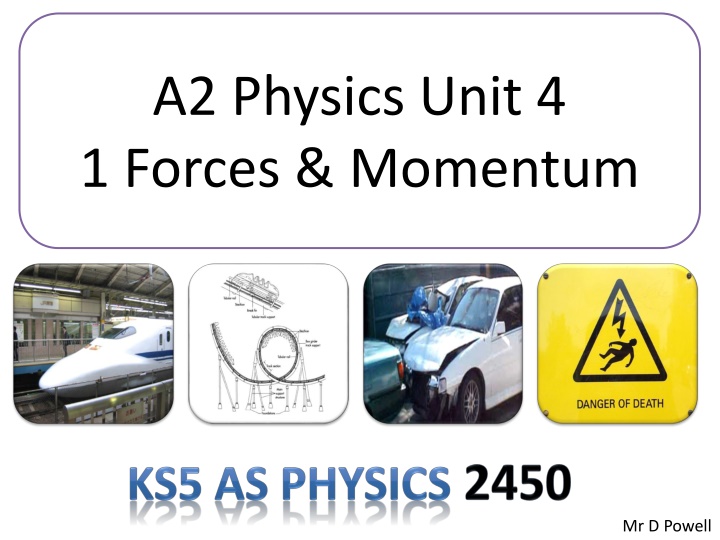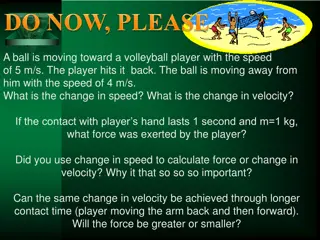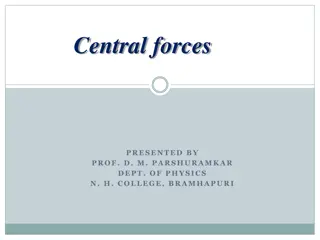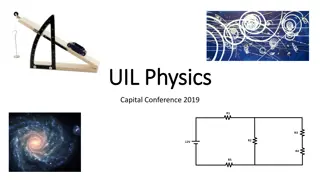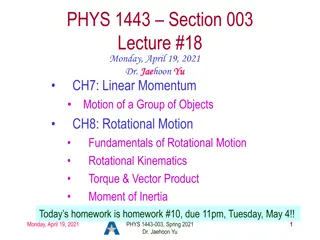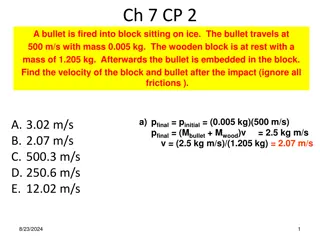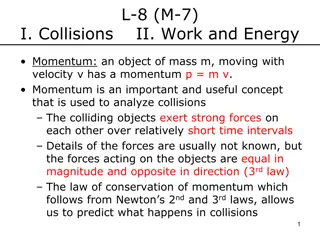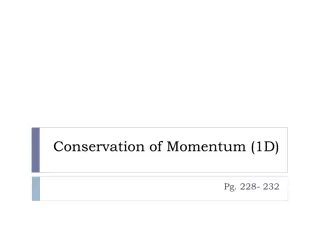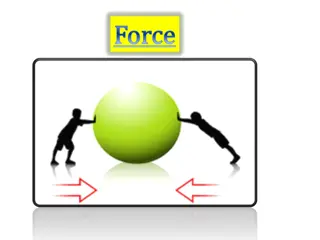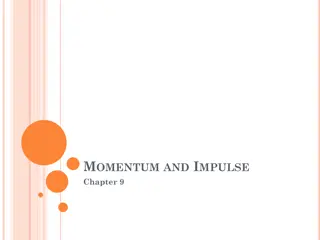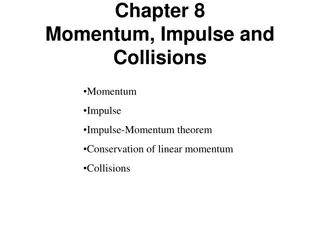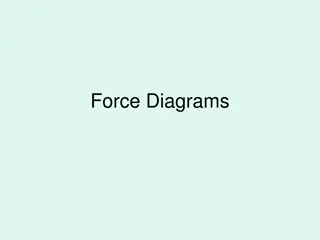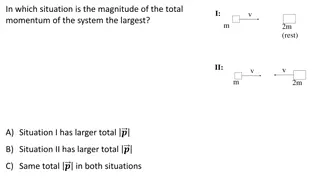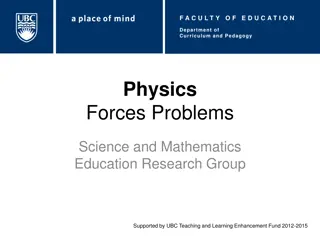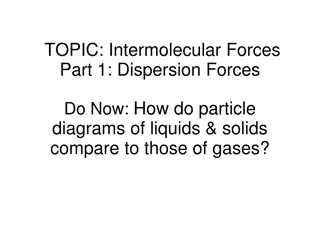Momentum and Forces in Physics
Concept of momentum and forces in physics through examples and calculations. Understand the principles of momentum conservation and how it relates to collisions and explosions. Dive into the dynamics of objects in motion and the interplay of forces that govern their behavior. Gain insights into the practical applications of these fundamental physical principles in real-world scenarios.
Download Presentation

Please find below an Image/Link to download the presentation.
The content on the website is provided AS IS for your information and personal use only. It may not be sold, licensed, or shared on other websites without obtaining consent from the author.If you encounter any issues during the download, it is possible that the publisher has removed the file from their server.
You are allowed to download the files provided on this website for personal or commercial use, subject to the condition that they are used lawfully. All files are the property of their respective owners.
The content on the website is provided AS IS for your information and personal use only. It may not be sold, licensed, or shared on other websites without obtaining consent from the author.
E N D
Presentation Transcript
A2 Physics Unit 4 1 Forces & Momentum Mr D Powell
Momentum m = 5 kg u = 200 ms-1 m1 = 3 kg m2 = m m1 = 5 3 = 2 kg v1 = 100 ms-1 v2 = v2 A rocket of mass 5 kg is travelling horizontally with a speed of 200 ms-1 when it explodes into two parts. One part of mass 3 kg continues in the original direction with a speed of 100 ms-1. The other part also continues in this same direction. Calculate its speed. momentum before the explosion = momentum after the explosion mu = m1v1 + m2v2 (5 x 200) = (3 x 100) + (2 x v2) 1000 = 300 + 2v2 1000 300 = 2v2 700 = 2v2 v2 = 700/2 v2 = 350 ms-1 Animated Science 2016
D (mv-mu )/t so kgms-2 W = mg or F=ma Cons of Momentum 0 = m1v1 m2v2 A Animated Science 2015
3 A If 100% elastic momentum is passed through to T2 so T1 must be at rest. As same mass the velocity is unaltered Animated Science 2015
p = momentum = mv = m/V V = m p = ( V) * v v = 2 x 10-4m3 / 7.2 x 10-4ms-1 = 0.277ms-1 1000kgm-3 x 2.0 x 10-4 m3 x 0.277ms-1 = 0.05555 kgms-1 = 0.056 kgms-1 B
B Ft = mv-mu F = (mv-mu)/t F = mv/t Animated Science 2016
C Area under graph...ft 5kN x 40/2 = 100kNs-1 Then mv = momentum. mv/m = 50ms-1 Animated Science 2016
D mv-mu v=-u This becomes... mv-(m-u) 2mv Animated Science 2016
C Ft=mv-mu Animated Science 2016
B v = 2x10-4 m3s-1 / 7.2x10-4m2 = 0.2778ms-1 mass per second = 1000kgm-3 x 2x10-4 m3s-1 = 0.2kgs-1 mv = 5.6 x 10-2 Momentum = mv = m/V V = m Vv = mv Animated Science 2016
D Inelastic means that you lose some KE to thermal/sound in the smash But you always conserve mass and total energy and momentum in any collision Animated Science 2016
mu/t = F F = ma D p= mv (-mu) = 2mv v=u as elastic! B Animated Science 2016
C Area under graph is Ft = mv-mu (5s x 10N )/ 2 = 25Ns Animated Science 2016
